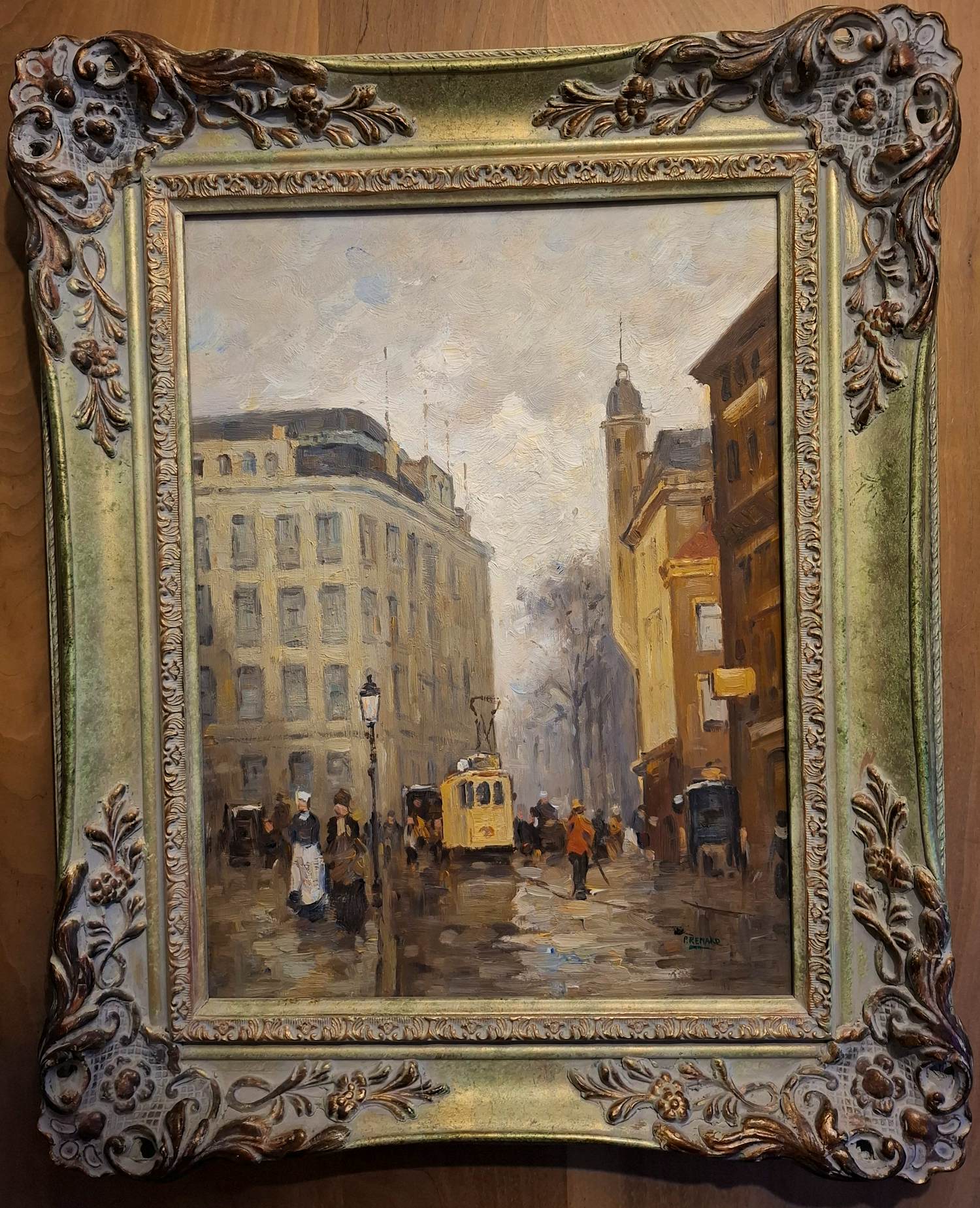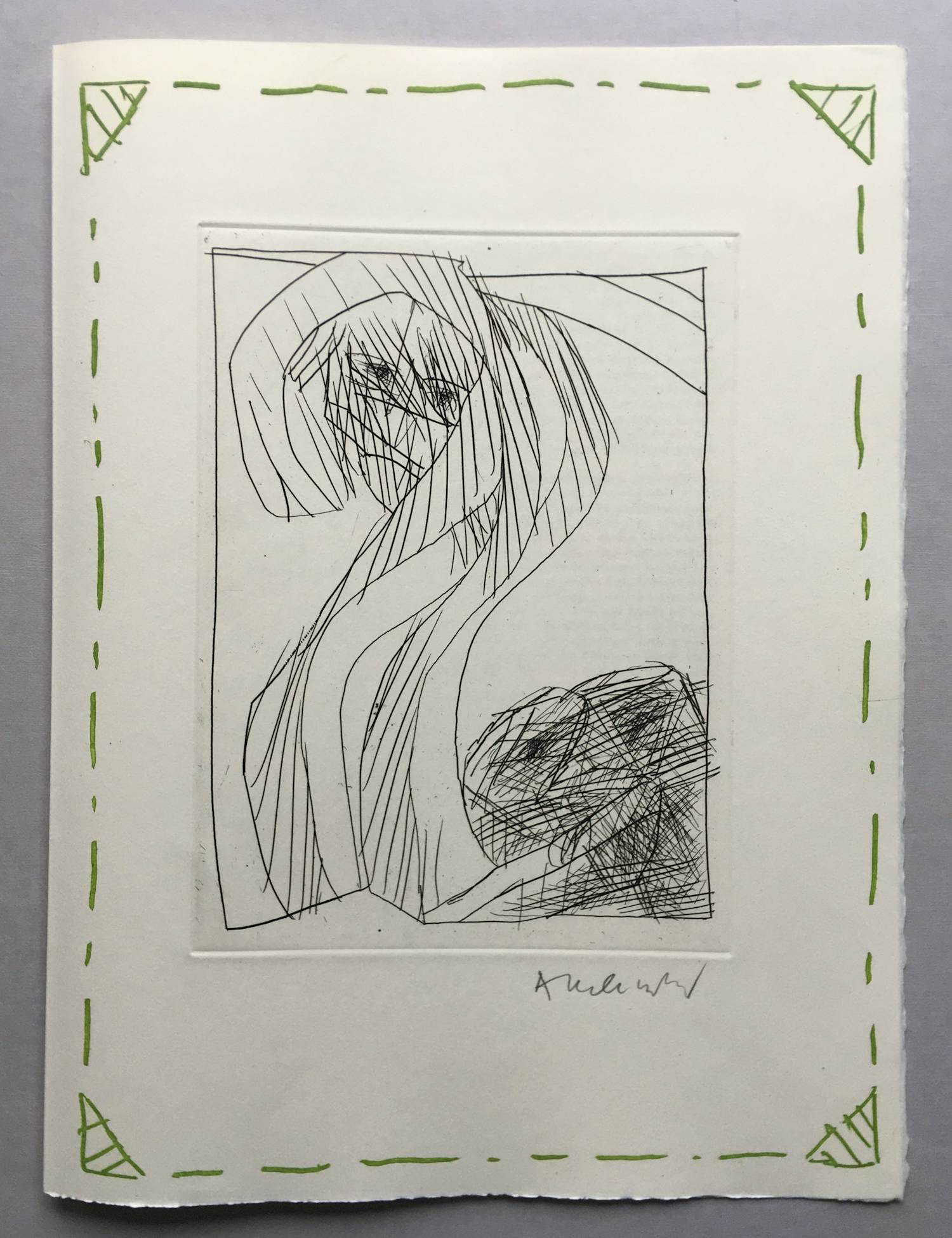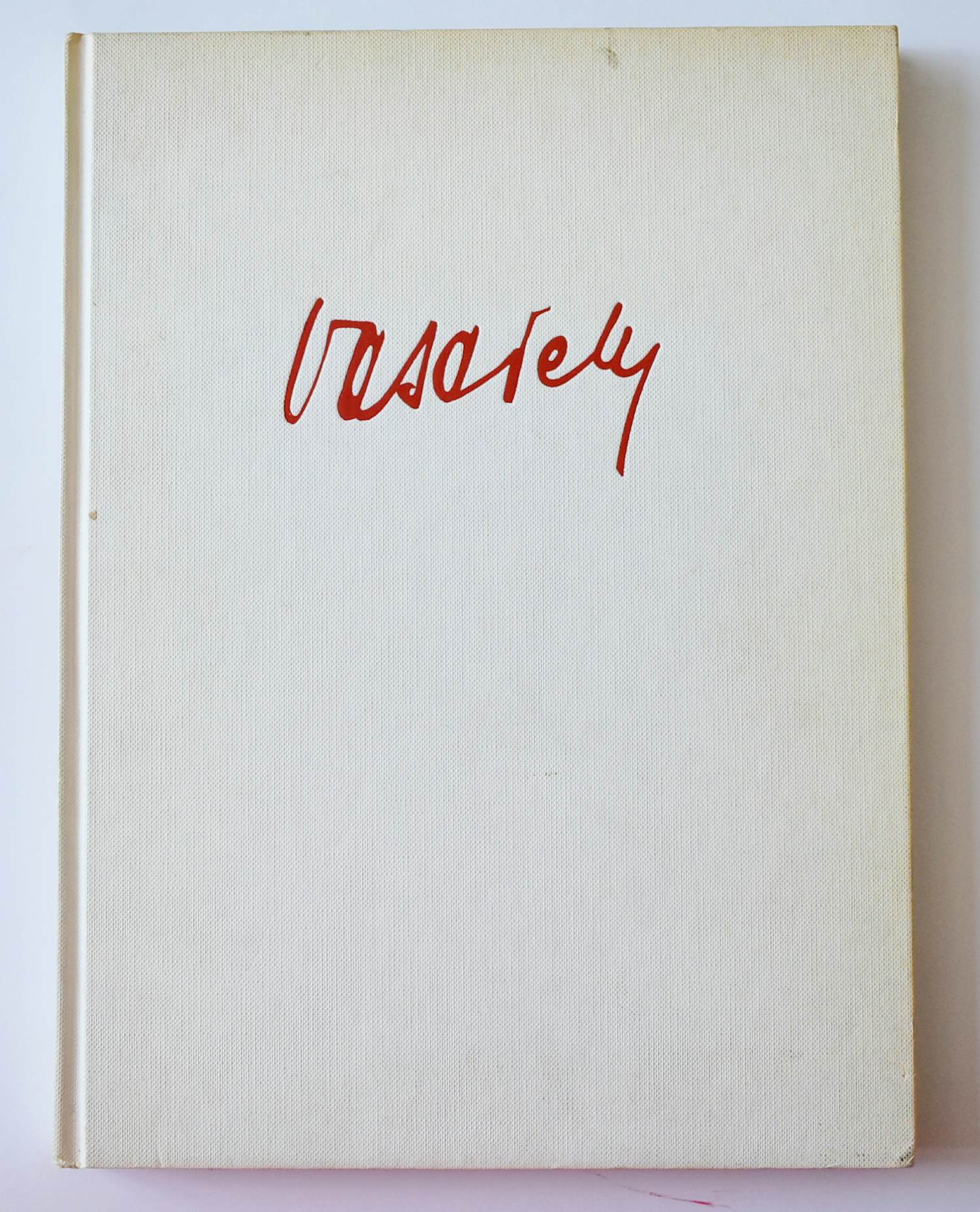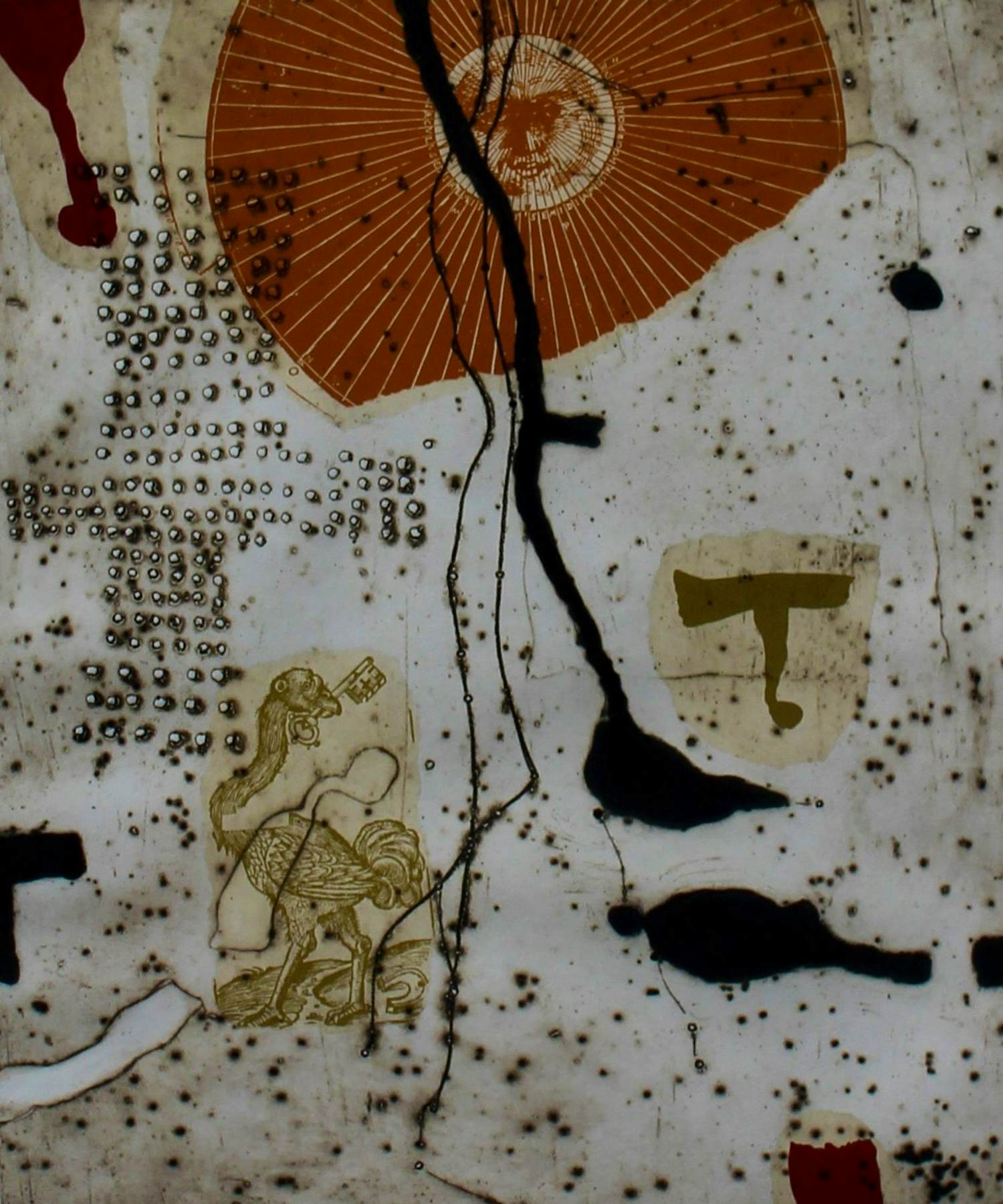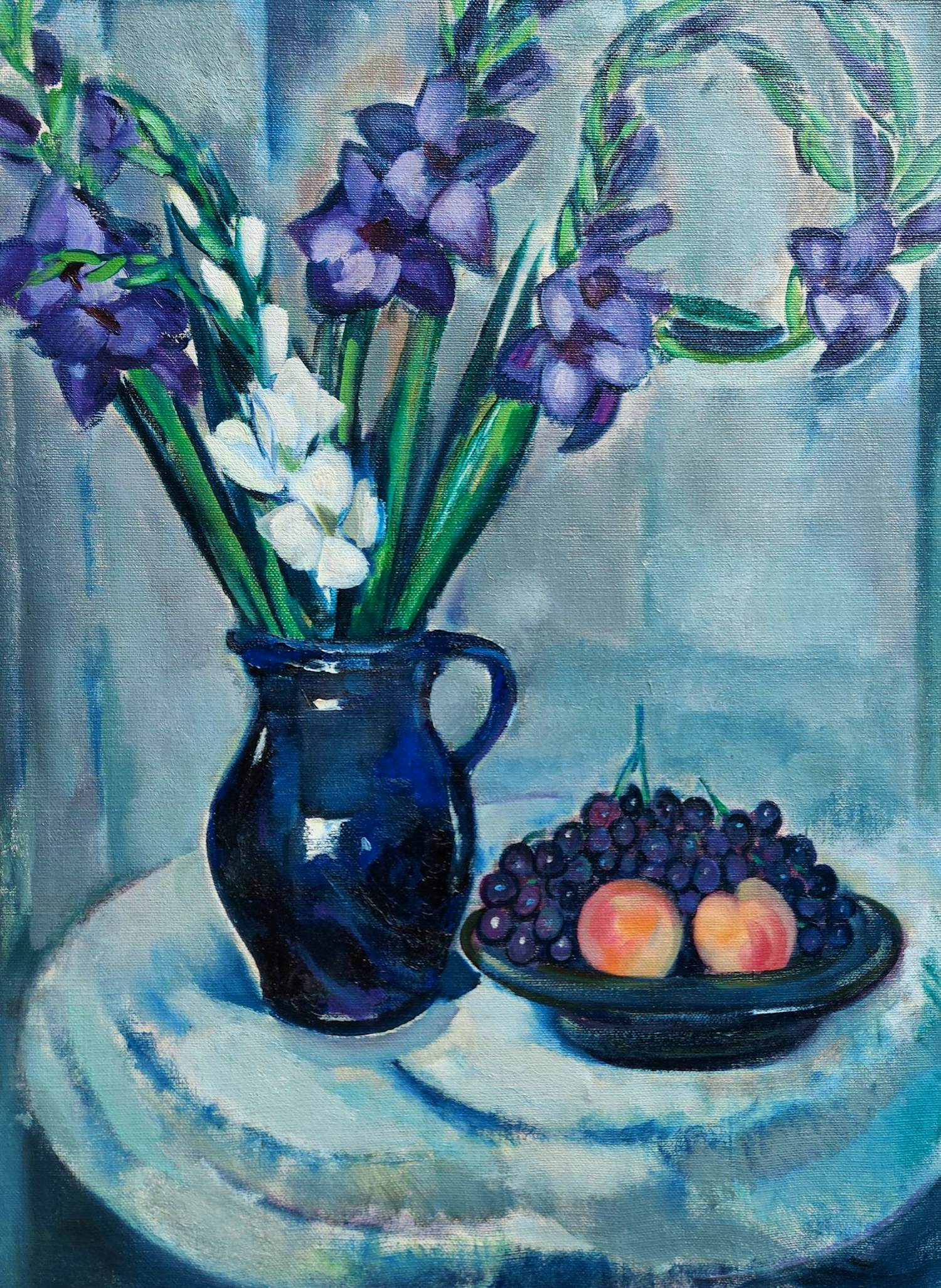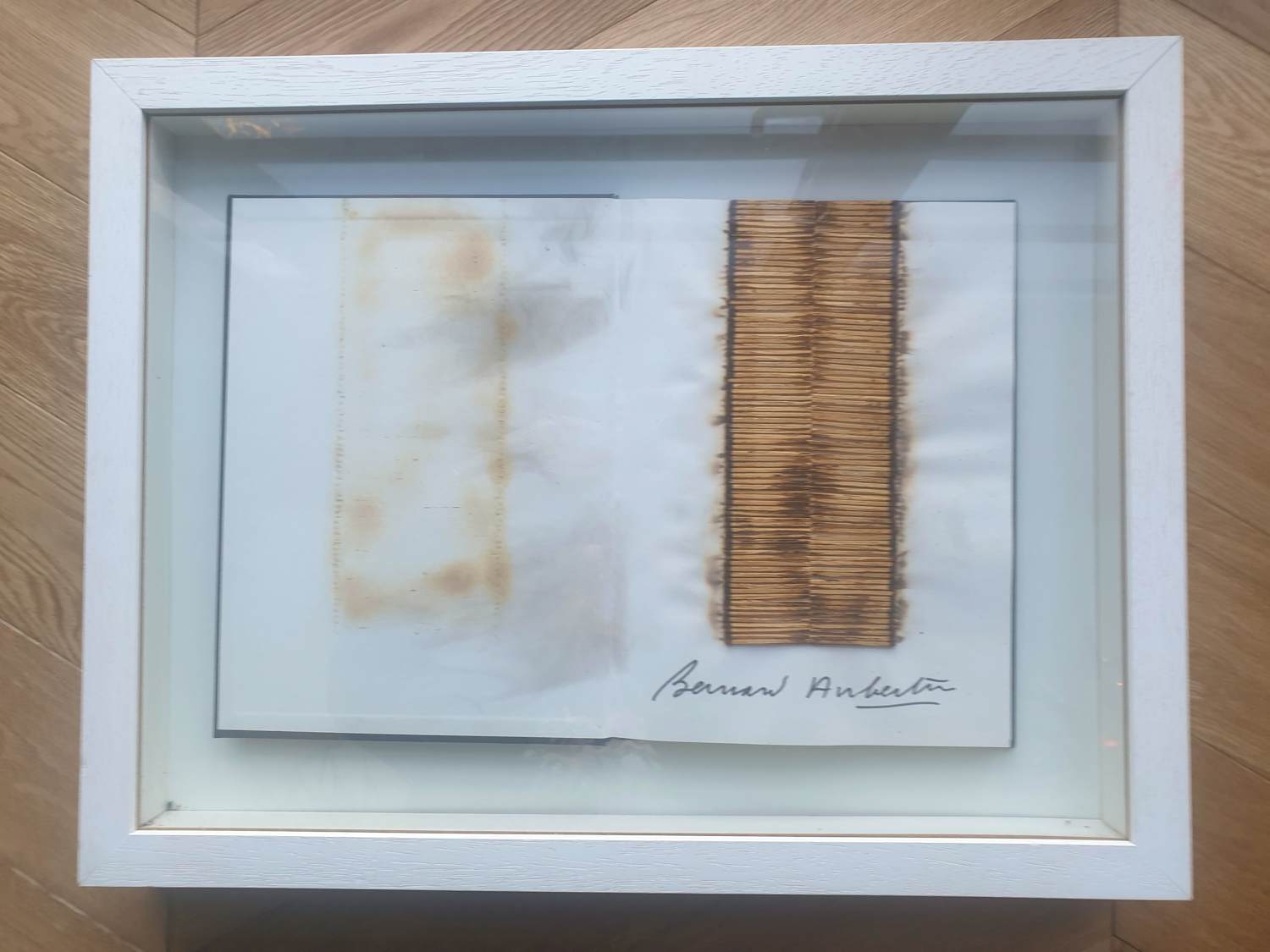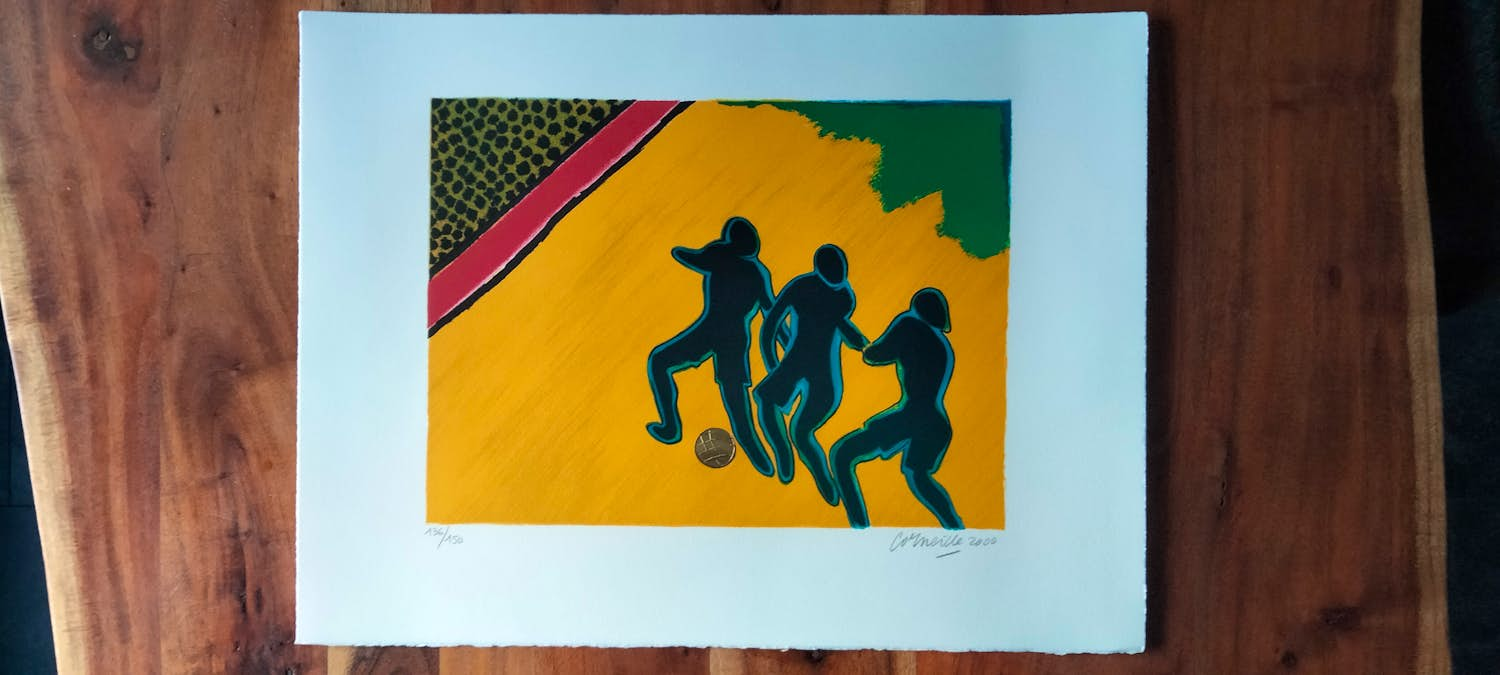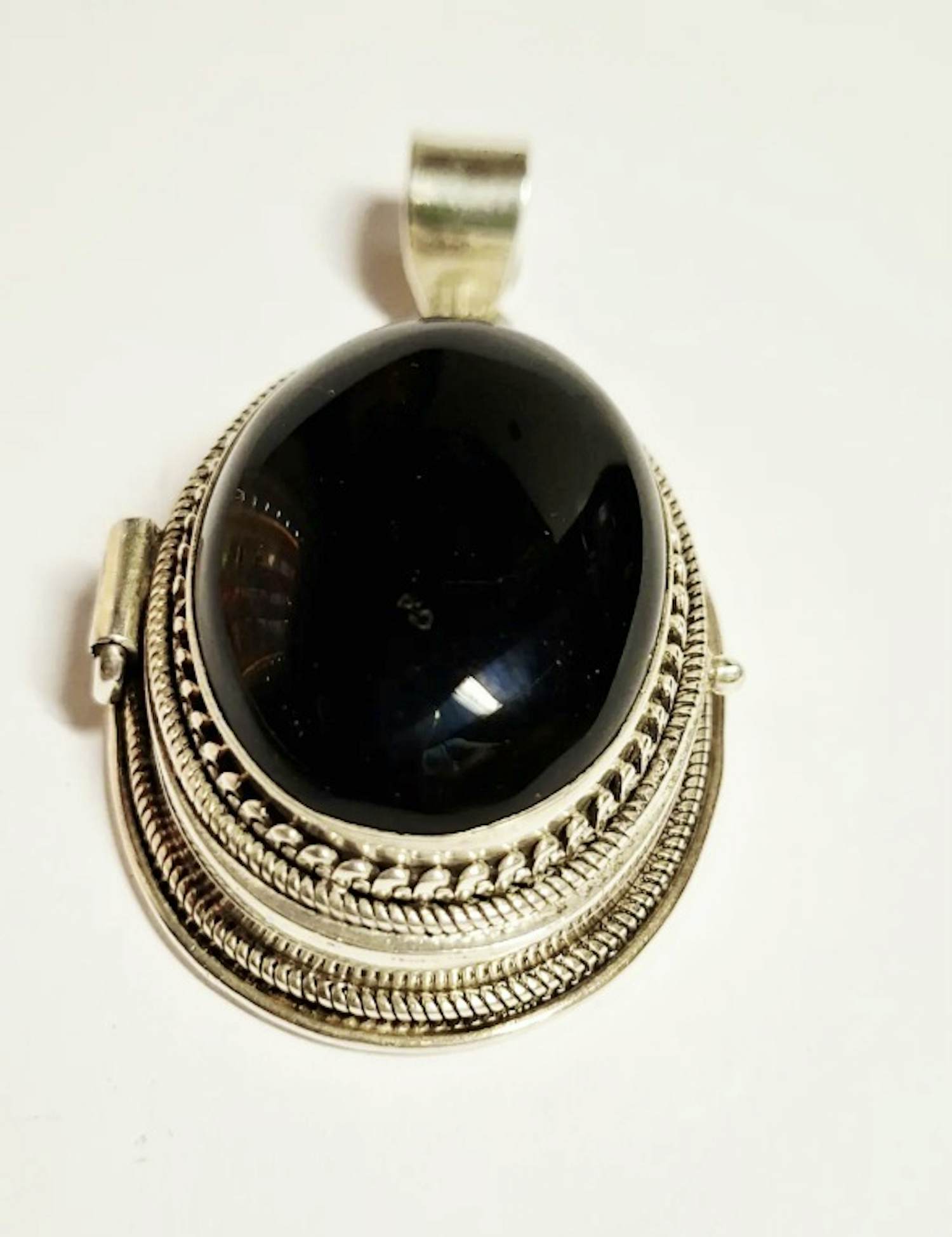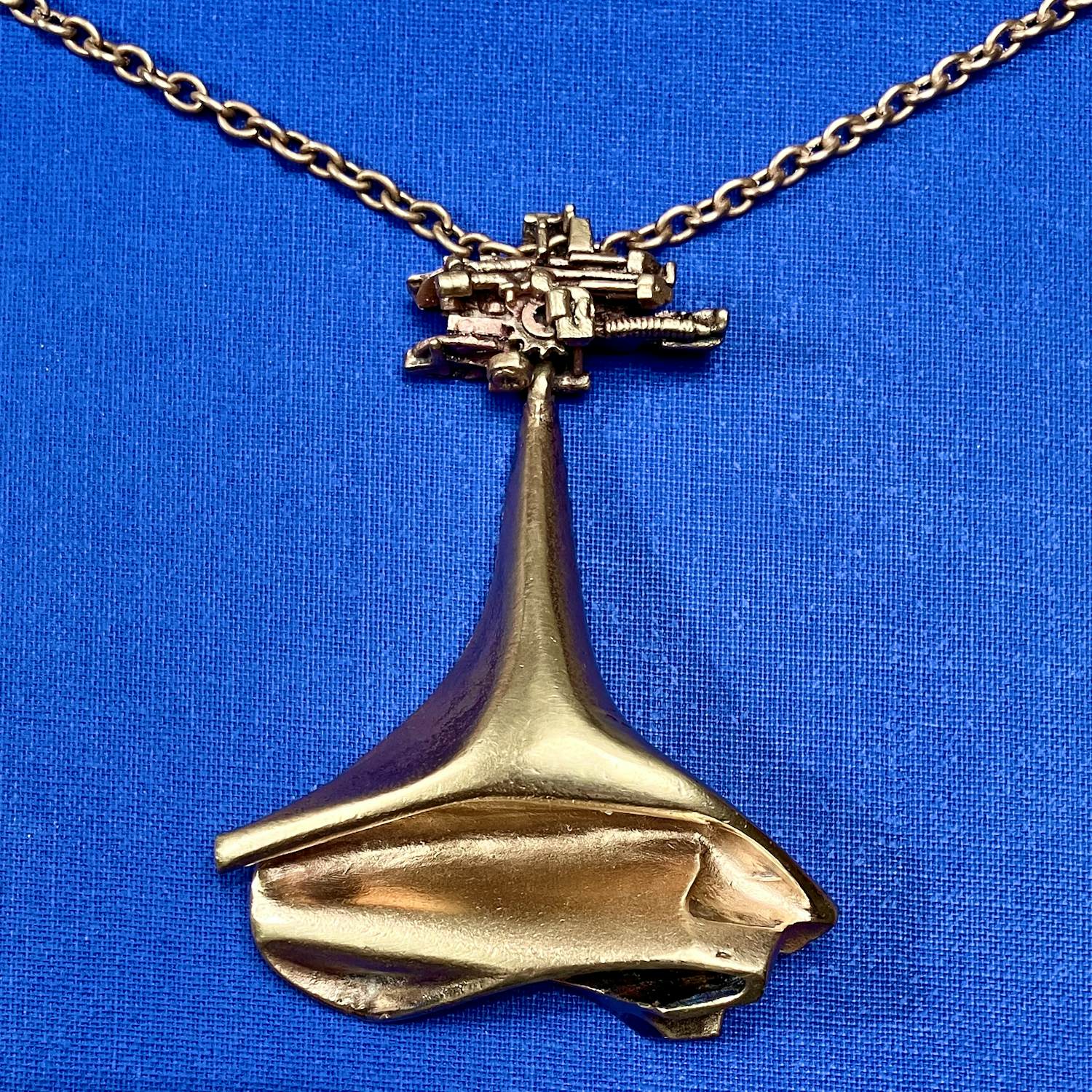

Thomas Ruff (1958)
Fotograaf
Thomas Ruff (born 10 February 1958) is a German photographer who lives and works in New York City. Thomas Ruff, one of six children, was born in 1958 in Zell am Harmersbach in the Black Forest, Germany. In the summer of 1974, Ruff acquired his first camera and after attending an evening class in the basic techniques of photography he started to experiment, taking shots similar to those he had seen in many amateur photography magazines.
During his studies in Düsseldorf and inspired by the lectures of Benjamin HD Buchloh, Ruff developed his method of conceptual serial photography. Ruff began photographing landscapes, but while he was still a student he transitioned to the interiors of German living quarters, with typical features of the 1950s to 1970s. This was followed by similar views of buildings and portraits of friends and acquaintances from the Düsseldorf art and music scene, initially in small formats.
Ruff studied photography from 1977 to 1985 with Bernd and Hilla Becher at the Kunstakademie Düsseldorf (Düsseldorf Art Academy), where fellow students included the photographers Andreas Gursky, Candida Höfer, Thomas Struth, Angelika Wengler, and Petra Wunderlich. In 1982, he spent six months at the Cité Internationale des Arts in Paris. In 1993, he was a scholar at Villa Massimo in Rome.
Work Commenting on his influences, Ruff said, "My teacher Bernd Becher, showed us photographs by Stephen Shore, Joel Meyerowitz and the new American colour photographers." He is often compared with other members of a prominent generation of European photographers that includes Thomas Struth, Andreas Gursky and Rineke Dijkstra.[3] From 2000 to 2005, Ruff taught Photography at the Kunstakademie Düsseldorf.
Portraits In his studio between 1981 and 1985, Ruff photographed 60 half-length portraits in the same manner: Passport-like images, with the upper edge of the photographs situated just above the hair, even lighting, the subject between 25 and 35 years old, taken with a 9 × 12 cm negative, and because of the use of a flash without any motion blur. The early portraits were black-and-white and small, but Ruff soon switched to color, using solid backgrounds in different colors; from a stack of colored card stock the sitter could choose one color, which then served as the background.[4] The resulting Portraits depict the individual persons - often Ruff's fellow students -[5] framed as in a passport photo, typically shown with emotionless expressions, sometimes face-on, sometimes in profile, and in front of a plain background.[6] Ruff began to experiment with large-format printing in 1986, ultimately producing photographs up to seven by five feet in size (210 × 165 cm).[7] By 1987 Ruff had distilled the project in several ways, settling on an almost exclusive use of the full frontal view and enlarging the finished work to monumental proportions.[8] Art critic Charles Hagen, writing for the New York Times, commented: "Blown up to wall-size proportions, the photographs looked like gigantic banners of Eastern European dictators."[9]
Because he found the effect of the colors too dominate in these, Ruff chose a light and neutral background for the portraits he made between 1986 and 1991.[10] In a discussion with Philip Pocock (Journal for Contemporary Art, 1993), Ruff mentions a connection between his portraits and the police observation methods in Germany in the 1970s during the German Autumn. Indeed, while experimenting with composite faces in 1992, Ruff came across the Minolta Montage Unit, a picture generating machine, used by the German police in the 1970s to generate phantom pictures. Through a combination of mirrors, four portraits, fed into the machine, produce one composite picture.[11] Ruff started out reconstructing faces but soon found it more interesting to construct artificial faces, which often combine features of men and women, that do not, but could conceivably, exist in reality; this resulted in his "Anderes Porträt" series (1994-1995).[12]
Ruff intended that large groups of the approximately eight-by-ten-inch color portraits would be hung together, so to add variety he photographed each person against a colored backdrop.
Häuser[edit] The series Häuser was created between 1987 and 1991. Ruff's building portraits are likewise serial, and have been edited digitally to remove obstructing details – a typifying method, which gives the images an exemplary character. Of these Ruff notes, "This type of building represents more or less the ideology and economy in the West German republic in the past thirty years." Architects Herzog & de Meuron soon became aware of this form of architecture photography and invited Ruff to participate in their entry for the Venice Biennale of Architecture in 1991 with a photograph of their building for Ricola.[13]
In 1999 the artist made a series of digitally altered photographs of Modernist architecture by Mies van der Rohe. The series l.m.v.d.r. - the initials of the architect - began as a commission offered to Ruff in 1999–2000 in connection with the renovation of Haus Lange and Haus Esters in Krefeld, Germany. Having worked with architectural subject matter since the mid-1980s, Ruff was enlisted to photograph the Krefeld buildings as well as the Barcelona Pavilion and the Villa Tugendhat in Brno.[14][15]
Sterne, Nacht and Zeitungsfotos[edit] These first series were followed in 1989 by images of the night sky, Sterne, which were not based on photographs by Ruff, but rather on archived images ('Catalogue of the Southern Sky', including 600 negatives) he had acquired of the European Southern Observatory in the Andes in Chile. These photographs of the stars, taken with a specially designed telescopic lens, are described and catalogued with the precise time of day and exact geographic position. From these photographs, Thomas Ruff selected specific details which he then enlarged to a uniform grand scale.[16] In the years from 1992 to 1995, during the first Gulf War, Ruff produced his Nacht series (1992–96), night images of exteriors and buildings using the same night vision infrared technology developed for use, both military and in broadcast television, during the Gulf War. From 1994 to 1996, these were followed by Stereoscopy images, and another series in the 1990s, Zeitungsfotos, consisted of newspaper clippings enlarged without their original subtitles.
Nudes[edit] In 2003, Thomas Ruff published a photographic collection of "Nudes" with a text by the French author Michel Houellebecq. Ruff's images here are based on Internet pornography,[17] which was digitally processed and obscured without any camera or traditional photographic device.[18] In 2009, the Aperture Foundation in New York published jpegs, a large-scale book dedicated exclusively to his monumental series of pixilated enlargements of internet-culled images, all compressed using the standard JPEG format.[19][20] which intentionally uses JPEG artifacts. His Substrat series (2002–03), based on images from Japanese manga and anime cartoons, continued this exploration of digitally altered Web-based pictures. However, he alters and manipulates the source material such that the work becomes an abstraction of forms and colors with no visual memory of the original source material.[21] On February 7, 2011, one of his Nudes pictures appeared on the cover of New York Magazine.[22]
Ontdek Kunstveiling
Kunst kopen van Thomas Ruff
Wilt u graag een kunstwerk kopen van Thomas Ruff? Bekijk dan het actuele veilingaanbod en bied mee op mooie en unieke kunstwerken van Thomas Ruff. Betaalbare en exclusieve kunst kopen van Thomas Ruff en andere erkende kunstenaars is leuk, toegankelijk én binnen handbereik via Kunstveiling. Ontdek nu alle kunstwerken van Thomas Ruff te koop bij Kunstveiling en bemachtig uw eigen Thomas Ruff!
Volg het aanbod kunst van Thomas Ruff te koop
Wilt u op de hoogte gehouden worden van nieuw aanbod van Thomas Ruff te koop? Via uw persoonlijke Kunstveiling account kunt u Thomas Ruff instellen als uw favoriete kunstenaar. Wanneer er nieuwe Thomas Ruff kunstwerken in de veiling worden geplaatst, ontvangt u hierover per e-mail bericht. Daarnaast kunt u alle kunstwerken van uw favoriete kunstenaars eenvoudig bekijken via uw persoonlijke account. Op die manier loopt u nooit meer een nieuw item in de veiling mis en koopt u gemakkelijk kunst van Thomas Ruff!
Bekijk bijvoorbeeld ook eens het aanbod kunstwerken van Karel Appel, Anton Heyboer en Klaas Gubbels in de veiling.
Waarom via Kunstveiling kunst van Thomas Ruff kopen?
Via Kunstveiling koopt u unieke kunstwerken van Thomas Ruff en andere erkende kunstenaars tegen veilingprijzen. Kunst kopen van Thomas Ruff via Kunstveiling is toegankelijk, transparant en laagdrempelig. Dagelijks worden vele nieuwe kunstwerken in de veiling geplaatst, van moderne schilderijen tot oude prenten en van sculpturen tot design en sieraden. U stemt het aanbod gemakkelijk op uw eigen wensen af en wordt automatisch in contact gebracht met de verkoper als u na afloop van de veiling de hoogste bieder bent. U betaalt bij Kunstveiling slechts 15% veilingkosten over de hamerprijs. Dit wordt bij het uitbrengen van een bod al aangegeven, zodat u achteraf nooit voor verrassingen komt te staan.
Bovendien kunt u via Kunstveiling ook zelf kunst van Thomas Ruff of andere erkende kunstenaars verkopen. Meer over het verkopen van kunst leest u op de pagina Kunst Verkopen.
Hoe breng ik een bod uit op een kunstwerk van Thomas Ruff?
Kunst kopen van Thomas Ruff begint bij het plaatsen van een bod. Om een bod uit te brengen op een kunstwerk van Thomas Ruff, heeft u account bij Kunstveiling nodig. Hier maakt u gemakkelijk een account aan. Bij alle items in de veiling treft u detailgegevens van het kunstwerk, een openingsbod en een aflooptijd. Tot deze tijd kunt u een bod uitbrengen op het kunstwerk van Thomas Ruff. Om meer kans te maken om de Thomas Ruff te bemachtigen, kunt u een autobod instellen. Bent u de winnende bieder? Dan neemt de verkoper contact met u op. Is het kunstwerk helaas aan u voorbijgegaan? Bekijk dan het actuele aanbod met alle andere kunst van Thomas Ruff! Let op: lees voordat u kunst gaat kopen of verkopen via Kunstveiling de veilingregels goed door.
 Duits
Duits 